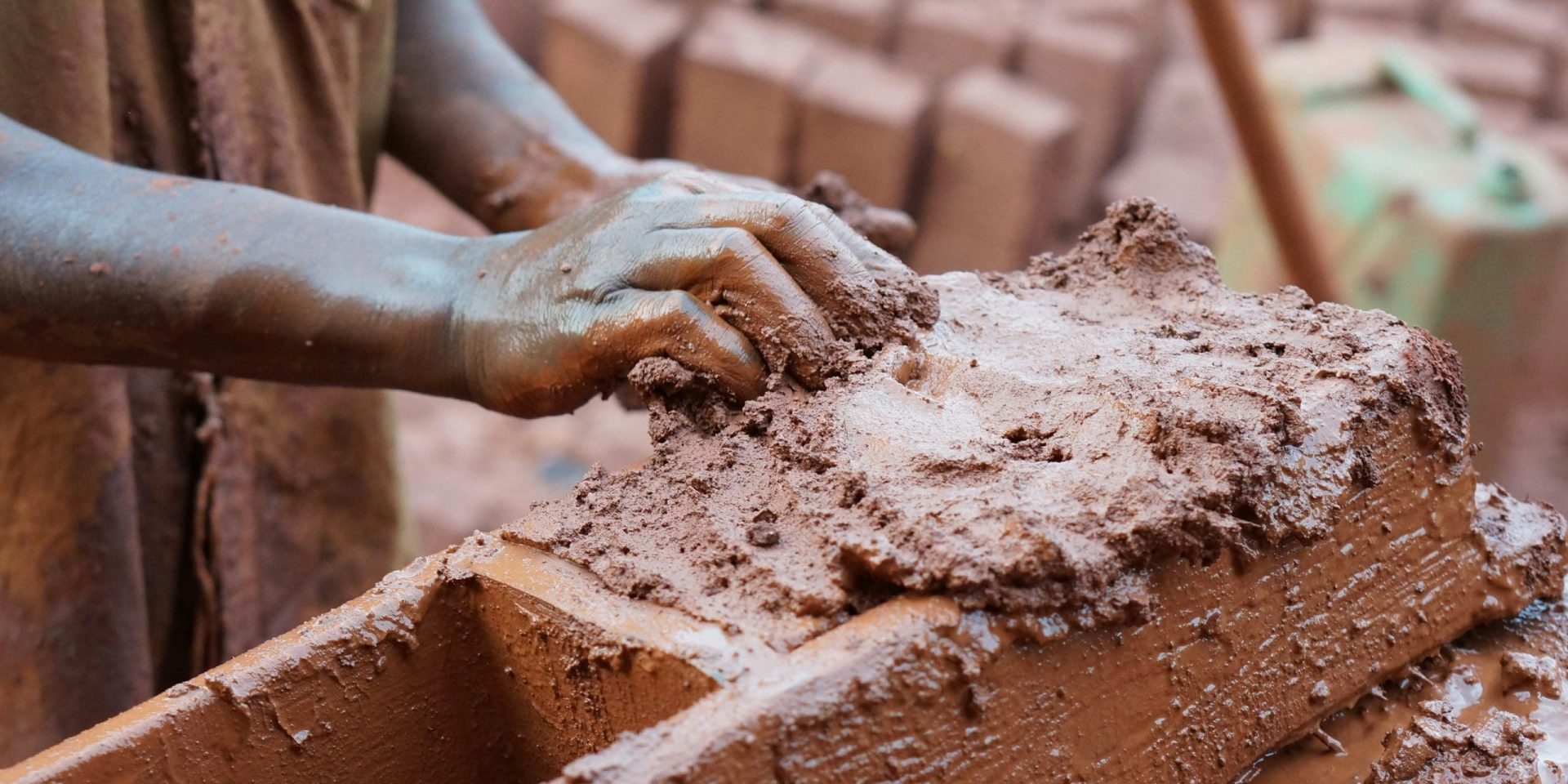Mankind has always looked to the world around him to survive. Building materials are no different. Caves, rocks, trees and mud have all been used as natural and convenient resources to build shelter for basic living (homes), protection (walls/gates/towers), and awe-inspiring feats of architecture (temples/statues/palaces/public buildings). The most accessible building materials vary from region to region, but one of the favourites of the Near East has always been mud. By amending already existing soil, long-lasting mudbricks can be created. Historically, these have been used throughout the ancient Near East, appearing even in the pages of the Bible.
Beginning in the early chapters of the book of Genesis, baked mud bricks are cited as the building material of choice for the Tower of Babel (Gen. 11:3). The enslaved Israelites in Egypt were employed in brickmaking and farming (Ex. 1:14), and famously, the Pharoah of the Exodus punished the Israelite brick makers by refusing to supply their straw while demanding the same number of bricks be made (Ex. 5:6-8).
With several other mentions of mudbrick in the Bible (2 Sam. 12:31; Isa. 9:10; 65:3; Jer. 43:9; Nah. 3:14), and the physical remains of mudbrick found all over the ancient Near East their usage was commonplace and their production essential. Though today, more modern materials are generally used in building projects, there is at least one reconstruction project that required an archaeological experiment to preserve a crumbling cite.
“You shall no longer give the people straw to make bricks, as in the past; let them go and gather straw for themselves.”
Exodus 5:7
At ancient Tel-Rehov in the Egyptian Nile Delta area, archaeologists set about to preserve an archaeological site by creating their own mud bricks to build support walls. The project was carried out in 2013, and served to not only preserve a site, but also to test out just how the ancient process would have gone. and the workers died their mudbricks red so that they could be easily distinguished from their ancient counterparts. Using known ancient methods, and scientific analysis of existing mudbricks at the site, the ancient process was mapped out.
First, topsoil was collected and mixed with water to create mud. Second, straw was added to the mud as temper and mixed in by foot. Straw chaff is what specifically would have been used. Procured either from threshing floors after the wheat harvest, or collected from fields, either way the straw would have been chopped into small pieces before adding to the mud. It gives the bricks an underlying structure that has been proven to create stronger, longer lasting bricks. Third, the mud mixture received a good daily mixing by foot for several days and then left for a couple of days to ferment. Fourth, the mud was then pressed into moulds of the desired sizes and laid out on a floor dusted with an anti-sticking agent like sand, dirt or more chaff. After a week of drying in the sun, the bricks are ready to use. In construction, mudbricks would be held together with mortar, and often the finished walls would be plastered over to create a seal of protection against the elements.
Now, just like today, exact production of mudbricks could vary from region to region, and their drying could be accelerated by baking in a kiln.

Corie Bobechko is a daily co-host, speaker, and writer of Bible Discovery. She also hosts a YouTube channel that shows how history and archaeology prove the Bible. Her heart for seekers and skeptics has led her to seek truth and share it with others. Corie also has a Bachelor of Theology from Canada Christian College.
• Robert Littman, Marta Lorzenon, Jay Silverstein, “With & Without Straw: How Israelite Slaves Made Bricks”. Biblical Archaeology Review. March/April 2014.
https://www.baslibrary.org/biblical-archaeology-review/40/2/8
• Anon. BAS Staff, “How to Make a Mudbrick Get a step by step look at the process”. Biblical Archaeology Society. Revised on January 09, 2024.
https://www.biblicalarchaeology.org/daily/ancient-cultures/daily-life-and-practice/how-to-make-a-mudbrick/






